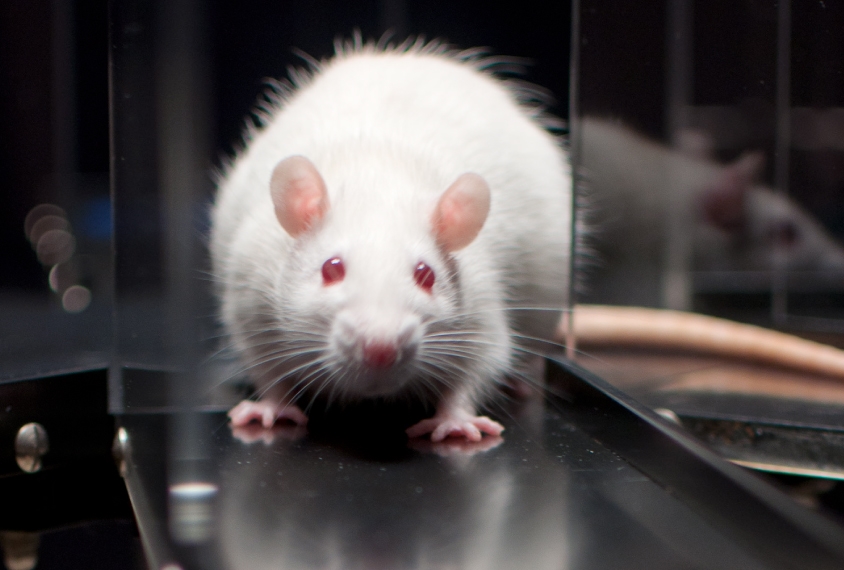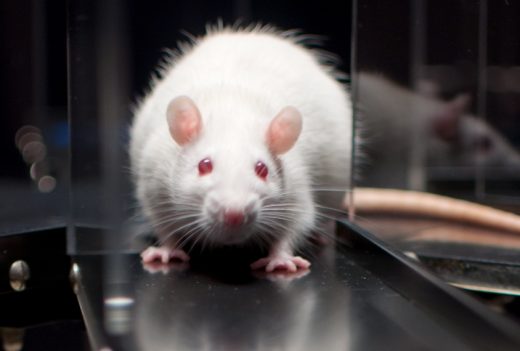Deep Learning for Rat Squeaks, Machine Learning for Intent Signals
— March 2, 2019
Rats have been relied on for laboratory medical testing for decades. But, it wasn’t until recently that scientists tuned in to their incessant lab chatter.

It was no secret that rats are chatty socialites, but most rodent vocalizations are ultrasonic, or above the frequency human ears can hear. So, two researchers at the University of Washington built a software tool that can capture, synthesize, and categorize rodent squeaks.
The automated capturing and sorting doesn’t just let the scientists hear the rats, though. It has the potential to add incredibly useful contextual information to innumerable research studies.
The two University of Washington School of Medicine scientists, Kevin Coffey and Russell Marx, have dubbed their software innovation “DeepSqueak.” DeepSqueak uses deep learning algorithms to track, compare, and analyze patterns in rodent squeaks. This level of insight into rodent communication is unprecedented, and the behavioral insights revealed will add a layer of context to studies involving rats.
Technical and financial limitations have prohibited most labs to analyze rodent ultrasonic vocalizations, according to Coffey and Marx’s study abstract. But DeepSqueak has revolutionized rodent vocalization analysis; from its availability, to its design (which is intended to empower non-expert users to analyze ultrasonic vocalizations), to its easy integration with existing rodent behavioral procedures.
Check out this Verge Science video in which The Verge staff try using DeepSqueak to record and decode a rat named Buddy’s squeaks.
B2B buyers conducting active research on the Internet are not rodents, and Aberdeen is certainly not predicting wins and losses based off squeaks. However, this innovation can be compared to the AI-powered data science fueling Aberdeen’s intent data offerings.
But, How?
Until recently, rodent ultrasonic vocal analysis was cost- and skills-prohibitive to most labs, but is now affordable and available for non-experts. In the same way, today’s generation of analytics and market intelligence tools have evolved to include non-data scientist users. And for organizations unable to afford their own machine learning algorithms, data scientists, or business intelligence suites, data science firms and data providers offer services in which they do the legwork and clients reap the insights via a user-friendly interface.
The kinds of analysis and actionable insights Aberdeen finds in its huge sets of intent data are available for non-data scientists (perhaps the new class of data scientist – the marketing data scientist) to access valuable insights and visibility into their marketspaces. Aberdeen’s tech also captures, tracks, sorts, and analyzes patterns found amidst regular web activity, not within rat chatter, and it makes predictions based off that analysis.
And just as the scientists who created DeepSqueak aim to add contextual behavioral information to research involving these small mammals, Aberdeen’s insights into the behavioral patterns of prospective buyers who have emitted purchase intent signals will add a key layer of visibility and context to marketing and sales operations.
Algorithms capable of discerning true buyer intent signals from the cacophony of everyday web noise might not be the language barrier-breaking innovation that translates rat chitchat for human understanding, but for now, identifying intent, predicting wins or losses, and improving pipeline results will certainly do.
Do you know which specific companies are currently in-market to buy your product?
Wouldn’t it be easier to sell to them if you already knew who they were, what they thought of you, and what they thought of your competitors?
Good news – It is now possible to know this, with up to 91% accuracy. Check out Aberdeen’s comprehensive report Demystifying B2B Purchase Intent Data to learn more.
Business & Finance Articles on Business 2 Community
(52)


